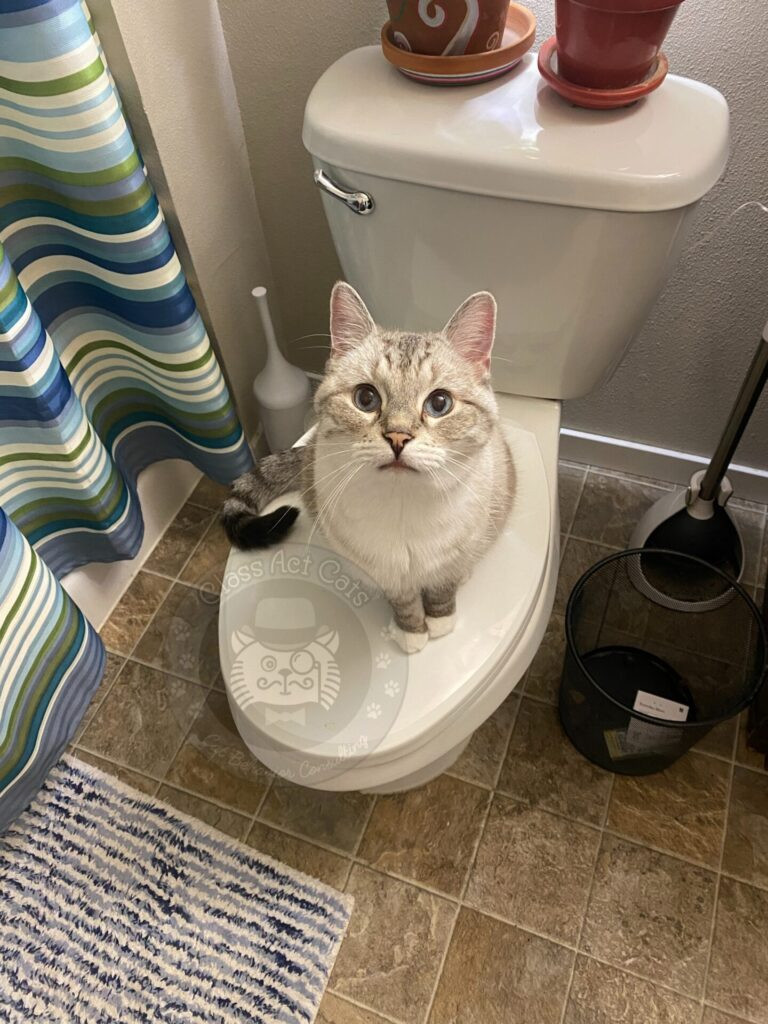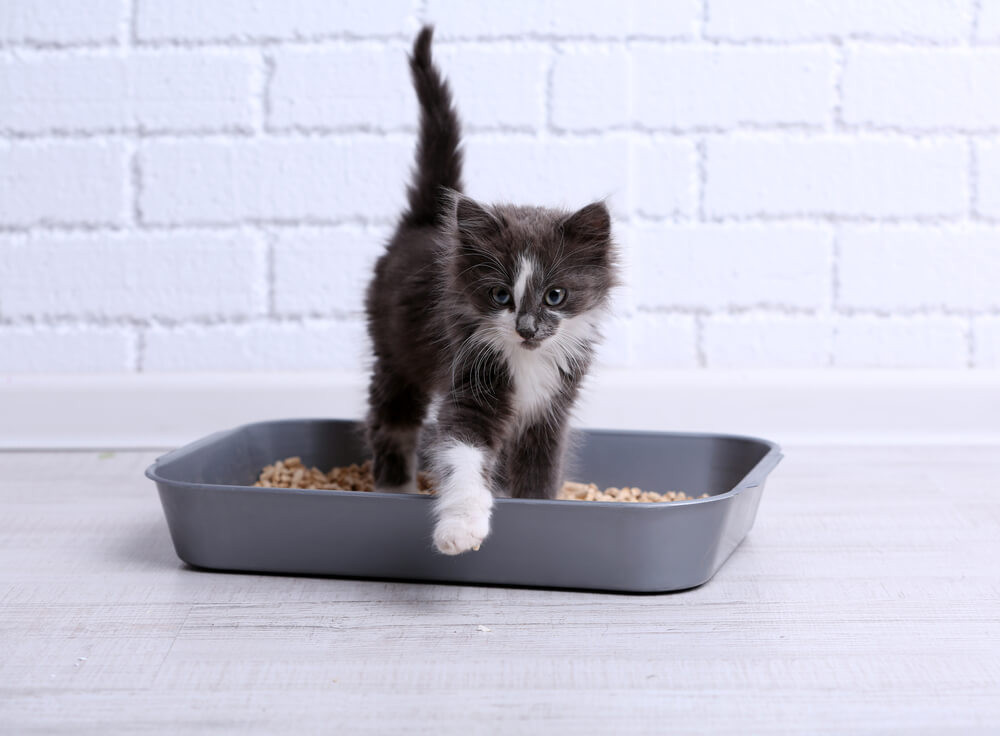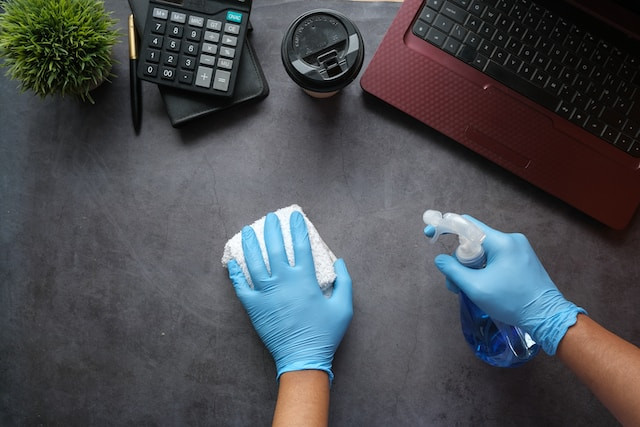As a content creator for solcat.net and a dedicated litter box usage expert, I often address the frustrating issue of cat urine outside the litter box. Dealing with cat pee, especially on carpets, can be unpleasant and challenging. Improper cleaning can worsen the problem and fail to eliminate the persistent odor. This guide provides best practices for effectively cleaning cat urine from carpets and various surfaces, ensuring odor removal and preventing recurrence. However, remember that the most crucial step is understanding why your cat is not using the litter box. Consulting with a veterinarian is essential to rule out underlying medical issues that may cause behavioral changes. If behavioral problems persist, seeking advice from a cat behavior consultant can be beneficial.
Understanding Cat Urine Odor
Cat urine’s notoriously strong smell stems from its unique composition. Before delving into feline behavior, I once experimented with a litter that promised odor control and infrequent changes, only scooping feces. I quickly learned the flaws in this approach. Upon changing the litter after a week, the accumulated urine odor was overwhelming, a truly revolting experience that highlighted the discomfort my cat must have endured. This experience led me back to unscented clumping litter, regular scooping, and consistent cleaning to maintain a low-odor litter box environment.
 Zoloft the cat sits on a closed toilet looking at the camera
Zoloft the cat sits on a closed toilet looking at the camera
The pungent smell of cat urine is primarily due to felinine, a sulfur-containing amino acid. As felinine degrades, it produces volatile sulfur compounds responsible for the characteristic ammonia-like odor.
Why Cat Urine Smell Lingers and Returns
Beyond felinine, uric acid is another significant component contributing to the lasting odor of cat urine. Uric acid crystals can remain embedded in carpet fibers even after cleaning attempts. These crystals reactivate and release odor when exposed to moisture, such as humidity.
Even if humans can no longer detect the odor, cats, with their superior sense of smell, can still perceive uric acid. This residual scent can attract them back to the same spot, leading to repeat urination in the same area. Therefore, thorough uric acid removal is crucial to prevent recurring accidents and odor.
 A grey kitten stepping out of a litter box.
A grey kitten stepping out of a litter box.
Effective Cleaning Products for Cat Urine on Carpet
Simply using soap, water, and a towel is insufficient for eliminating cat urine odor effectively because these methods often fail to neutralize the odor-causing compounds. Specialized products are necessary to tackle cat urine effectively. While general cleaners may work for other messes, they are often inadequate for cat urine. Bleach, in particular, is not recommended for cleaning cat urine.
No single product is universally superior, but effective cat urine cleaners share key characteristics.
The Power of Enzymatic Cleaners
Enzymatic cleaners are highly recommended for cat urine removal. Products like Rocco & Roxie Stain & Odor Eliminator, Angry Orange Enzymatic Pet Odor Eliminator, and Nature’s Miracle Advanced Stain and Odor Remover are effective choices. These cleaners contain enzymes specifically formulated to break down uric acid and other odor-causing components of cat urine at their source. Prioritize enzymatic cleaners designed for cat urine to ensure effective odor elimination.
While some products might claim to contain enzymes, not all are equally effective. Avoid general cleaners or products primarily designed for dog urine. Opt for professional-strength enzymatic cleaners to ensure a concentrated formula capable of fully neutralizing uric acid. Products labeled for both cat and dog urine can be suitable, provided they specifically mention effectiveness against cat urine.
Oxy Cleaners and Deodorizers as Supplements
Oxy cleaners and deodorizers can play a supporting role in cat urine odor removal, especially after enzymatic cleaning. While they might not eliminate uric acid completely, they can help with stain removal and reduce residual odors. Oxidizing urine cleaners and pet odor eliminators can mask smells and lighten stains, but they are best used after an enzymatic cleaner has addressed the uric acid.
A good approach is to use an oxy cleaner in conjunction with a power carpet cleaner after initial enzymatic treatments. Carpet cleaners like the Bissell ProHeat 2X Revolution Pet Pro used with an oxy-based pet stain cleaner can provide a deeper clean and further reduce lingering odors. Investing in a portable carpet cleaner can be more cost-effective in the long run compared to repeated professional cleanings, especially while addressing the underlying cause of inappropriate urination.
Purchasing from Reputable Sources
Enzymes in cleaning products can degrade over time, reducing their effectiveness. Therefore, avoid buying enzymatic cleaners in bulk unless you intend to use them promptly. It’s also important to purchase from reliable sources. When buying products like Rocco & Roxie online, choose official stores or reputable retailers to ensure you receive fresh, potent products rather than aged stock from uncertain sellers. Buying directly from the manufacturer’s online store can sometimes be a safer option than mass retailers.
Step-by-Step Guide to Cleaning Cat Pee from Carpet
Having the right cleaning product is only the first step. Effective cat urine removal from carpet requires specific techniques depending on the stain’s age and the carpet type.
General Carpet Cleaning Process
Before applying any cleaner, always test it in an inconspicuous area of the carpet to check for colorfastness and material compatibility. While odor removal is the goal, avoid damaging or discoloring your carpet in the process.
Act quickly for fresh urine stains. The sooner you start cleaning, the less time urine has to penetrate deep into carpet fibers. Gently blot fresh urine from the outside of the stain inward using paper towels or a clean cloth to avoid spreading it.
Apply a small amount of enzymatic cleaner directly to the center of the stain, being careful not to oversaturate the area. Follow the manufacturer’s instructions for dwell time, allowing the enzymes sufficient time to break down the urine components. For set-in stains, consider extending the dwell time.
After the cleaner has dwelled, blot the area again to remove excess moisture and lifted urine. Repeat the application and blotting process at least once to ensure thorough treatment.
For carpets and rugs that can be laundered, soaking them overnight in a diluted enzymatic cleaner solution can enhance stain and odor removal. If your enzymatic cleaner is laundry-safe, adding a small amount to the wash cycle can further boost urine removal. Consider using a specialized enzymatic laundry detergent designed for pet odors for best results, rather than general laundry detergents.
After the visible stain and odor are gone, perform one final cleaning cycle to ensure complete uric acid removal, even if you can no longer smell urine. Cats have a far more sensitive sense of smell and may still detect residual uric acid, prompting them to re-mark the area.
 A person
A person
What to Avoid During Cleaning
Avoid pouring water directly onto the stain, as this can spread the urine over a larger area and push it deeper into the carpet padding.
When blotting, use a gentle blotting motion rather than rubbing or scrubbing vigorously. Aggressive rubbing can damage carpet fibers and force urine deeper into the carpet. Ideally, let absorbent materials like old towels naturally draw up the urine and cleaner with minimal pressure.
Deep Cleaning Carpet with a Carpet Cleaner
For carpets, especially for older or larger urine stains, using a carpet cleaner (power cleaner) is highly effective. Use a pet-specific carpet cleaning formula that is compatible with your machine. Enzymatic carpet cleaning formulas are ideal for cat urine.
For particularly stubborn stains, consider a two-step cleaning process. First, saturate the stain thoroughly with an enzymatic cleaner and allow it to dwell overnight. The next day, use the carpet cleaner to extract the cleaner and remaining urine residue. This pre-treatment can significantly improve stain and odor removal and minimize spreading the urine during machine cleaning.
Professional Carpet Cleaning for Cat Urine
In challenging situations, especially with extensive or deeply set-in urine stains, consider hiring a professional carpet cleaning service that specializes in pet odor removal. However, ensure you address the underlying cause of your cat’s inappropriate urination before professional cleaning to prevent re-soiling of the freshly cleaned carpet. When hiring a professional, specifically inquire about their experience with cat urine cleaning and the products they use. Confirm they use enzymatic cleaners designed for cat urine for effective odor neutralization.
Addressing Urine on Wood Flooring
Cleaning cat urine from wood floors presents unique challenges. Moisture from urine can warp or discolor wood, and urine can seep into the wood grain, making odor removal difficult. Prompt action and careful techniques are crucial.
Immediately blot up fresh urine from wood floors as quickly as possible. Remove any items covering the area that might have trapped urine. Wipe the area with a small amount of enzymatic cleaner and allow it to air dry completely. Once dry, lightly spray the area with cleaner, let it dwell briefly (for the minimum time recommended by the manufacturer, often around 15 minutes), and then wipe it up immediately. Allow the area to dry thoroughly and repeat the process as needed. The key for wood floors is to minimize moisture exposure, using short dwell times and ensuring complete drying between applications to prevent damage.
 A cat with a silly face
A cat with a silly face
Despite careful cleaning, wood floors may require refinishing to fully eliminate urine odor and damage, especially if the urine has penetrated deeply. It’s advisable to address the underlying cause of the urination problem before investing in floor refinishing.
Troubleshooting Persistent Cat Urine Odor
If your cleaning efforts are not fully successful, consider these troubleshooting steps:
- Re-evaluate your cleaner: Check the expiration date of your enzymatic cleaner and ensure you are using it according to the instructions. Verify that the product is suitable for the carpet type and stain severity. Use an adequate amount of cleaner to saturate the stained area.
- Try alternative products or methods: If one enzymatic cleaner isn’t effective, try a different brand or formulation. Consider using a carpet cleaner for deeper extraction or increasing the dwell time of the enzymatic cleaner.
- Protect affected areas: To prevent further urine damage while addressing the issue, use waterproof covers for furniture and mattresses, and washable rugs or pee pads for carpets.
- Monitor for repeat urination: Use a motion-activated camera to monitor the area and confirm your cat is not returning to re-mark the spot while you are away or asleep. Even if your cat uses the litter box sometimes, they might still be urinating in the problem area additionally.
- Seek professional help: If persistent odor remains despite your best efforts, consult a professional carpet cleaner specializing in pet odor removal.
When to Consider Replacement
Cleaning cat urine from carpet can be labor-intensive and require repeated efforts. For items of low value, heavily soiled items, or materials that are difficult to clean effectively, consider whether replacement is a more practical option than extensive cleaning. This is especially true for items with no sentimental value or if you were already considering replacing them.
For carpets and flooring, particularly after resolving the underlying cause of inappropriate urination, consider full replacement. Even with thorough cleaning, some residual urine odor may remain in carpet padding and subflooring. Replacement is the only way to ensure 100% odor removal in severe cases and is a practical, not lazy, approach to restoring your home environment.
Need Help with Litter Box Issues?
Schedule a Cat Behavior Consultation

